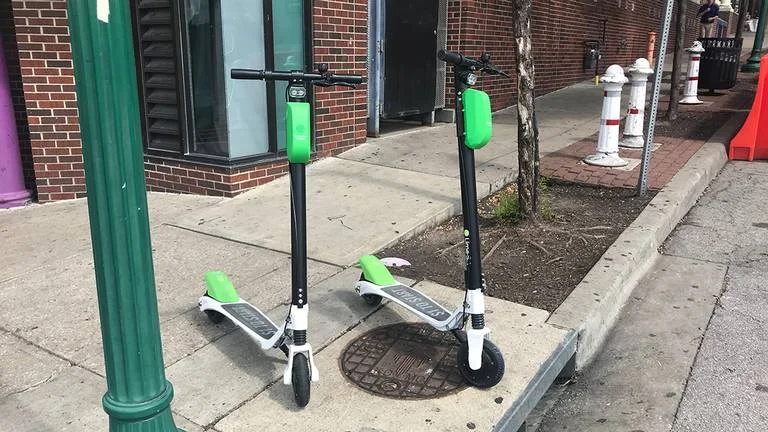Are all these electric scooters in KC an accident waiting to happen?

By The Kansas City Star Editorial Board
September 11, 2018 06:26 PM
Updated September 13, 2018 11:06 AM
With another surge of electric scooters arriving on Kansas City streets, local officials are scrambling to educate the public on the dangers of recklessly riding on sidewalks and streets without helmets. But will their outreach be enough to keep daredevils safe?
On Tuesday, Lime landed in the Kansas City market, just a couple months after Bird dropped electric scooters in multiple neighborhoods. Both companies require riders to wear helmets and operate the dockless scooters on streets.
But riders have zipped up and down the sidewalks and streets without helmets since Birddebuted here in July. Users are brazenly flouting the companies’ terms of service. And that is a recipe for disaster.
Area hospitals have already reported multiple injuries from the electric scooters including one patient with a brain injury. And the go-go gadgets are probably here to stay. More must be done to protect riders.
While no ordinance mentions electric scooters specifically, city officials say that an existing ordinance that prohibits motorized vehicles on sidewalks would apply to Lime and Bird.
Safety measures would be almost impossible to enforce, City Manager Troy Schulte said. The city’s experience with Lime will be incorporated into a pilot program that staff is developing, he said. But it’s too soon to say whether it will include punitive measures for hotdogging riders.
“We can pass an ordinance mandating helmets and/or we can have (the police department) start writing tickets for riding on sidewalks,” he said. “The PD and the city’s approach has been to educate first before enforcement. I think that approach has merit.”
Education does have value. Police in Kansas City need to focus on violent crime, and writing tickets for illegal use of electric scooters should not be a priority. But what’s the right balance?
That’s a source of consternation for transportation advocates, including Robbie Makinen, president and CEO of the Kansas City Area Transportation Authority. His message to riders and policymakers is simple: Let’s work together.
“You as a customer have got to take some responsibility also,” Makinen said. “It needs to be that type of partnership.”
The KCATA has been working with City Hall to get the scooters approved in areas along the agency’s bus routes. The effort is important, Kansas City Councilman Jermaine Reed said. Outreach should include residents in the urban core.
“Kansas City is on the rise,” Reed said. “But we have to continue to grow.”
The city has been quick to embrace dockless transportation. In fact, it’s one of only a few metro areas with both Lime and Bird. But until policymakers act on safety issues, riders should use the same strategies as cyclists, said Tracy McDonald, program director for trauma at the University of Kansas Health System.
Users should ride electric scooters in the proper street lanes and obey all traffic laws. It should go without saying that they should be sober and not distracted. A helmet is highly recommended.
As Schulte points out, bike lanes are now much more than just bike lanes.
“Construction of capital projects take years to accomplish and we have had a disruptive influence rapidly change the needs in streets in just a matter of months,” he said.
Electronic scooters and other modes of dockless transportation are multiplying rapidly. It would benefit the entire region if Kansas City developed its strategic plan with that in mind.
In the meantime, the onus is on riders and policymakers to ensure that all these electric scooters aren’t an accident waiting to happen.
Editor’s note: This editorial has been updated to reflect than an existing city ordinance that prohibits motorized vehicles on sidewalks would apply to Lime and Bird. Some area hospitals have now reported multiple injuries from the electric scooters.
Two Lime electric scooters at Mill Street and Westport Road early Tuesday afternoon Derek Donovan The Star







